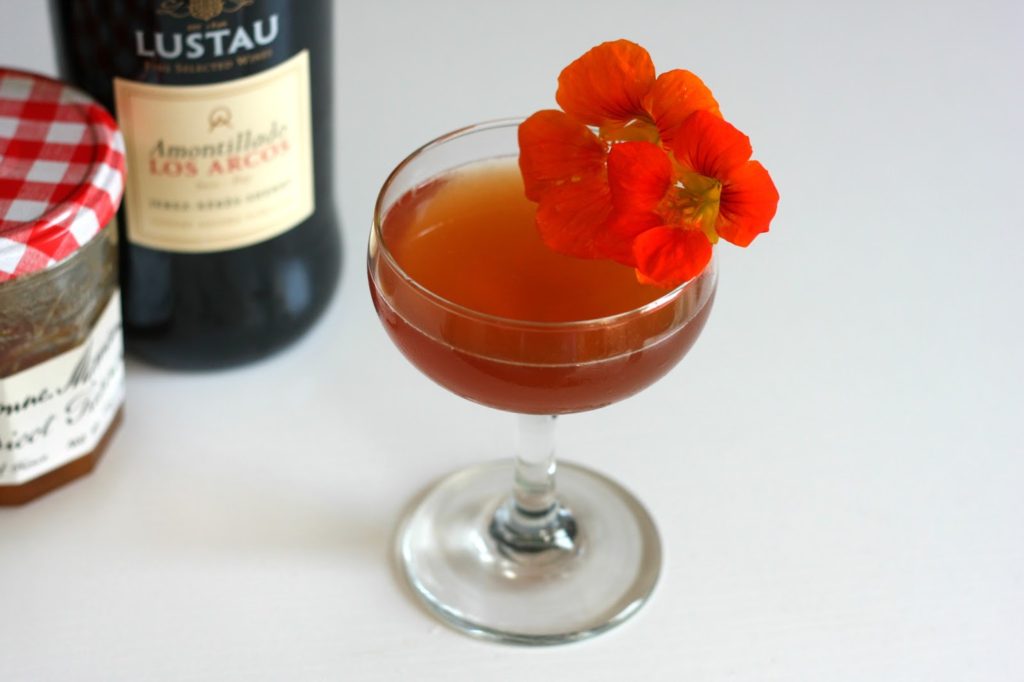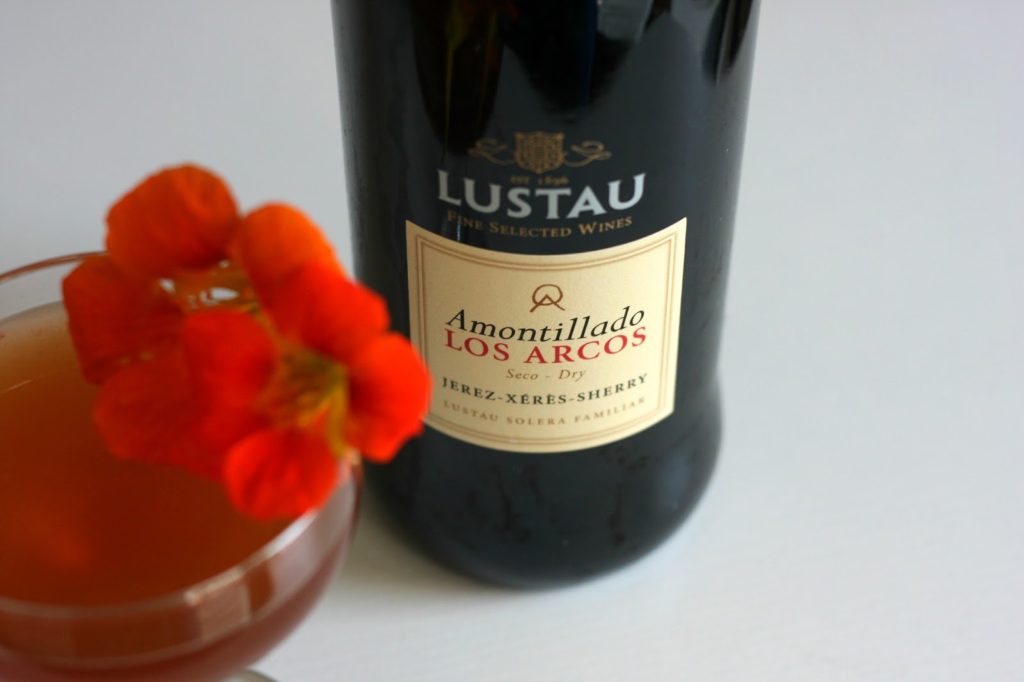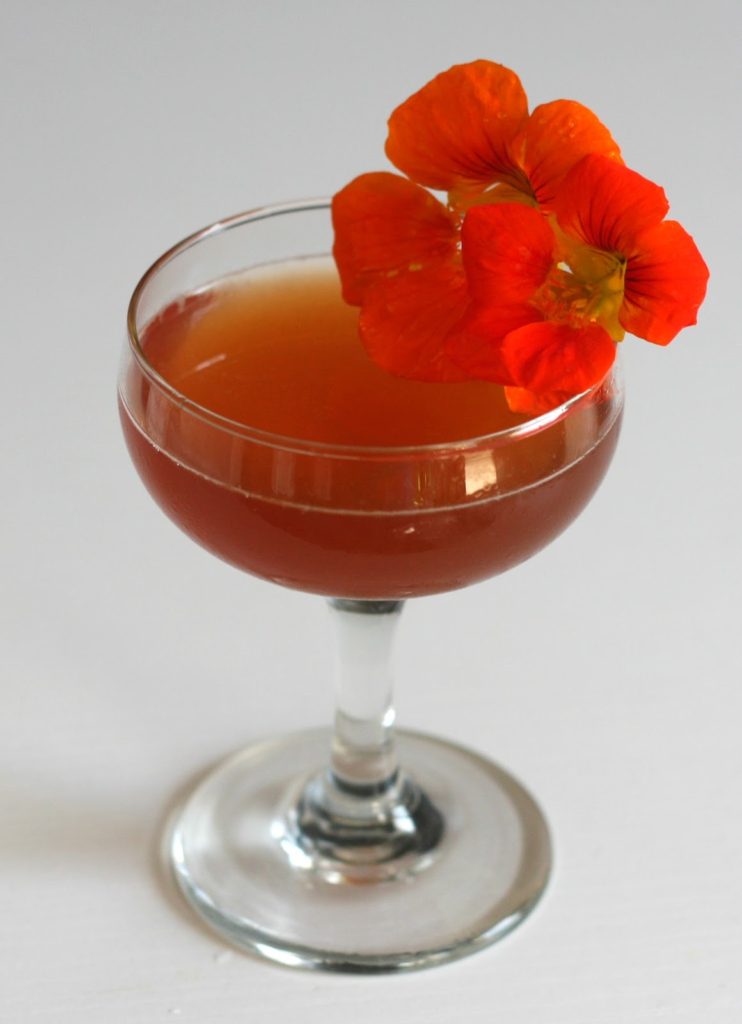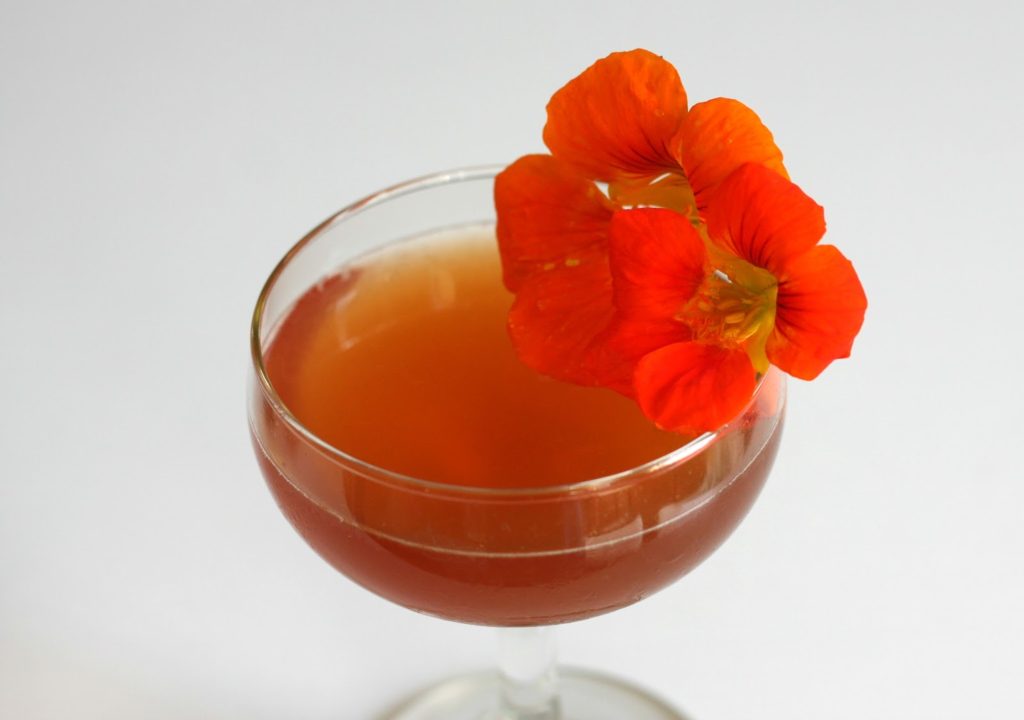A month or two ago, I finally bought the Death & Co cocktail book, a veritable bible of cocktail recipes and mixology tips from the famous New York bar. I’m still slowly working my way through the first half of the book, which is filled with information on spirits and techniques. I just finished the section on stirring cocktails, and it’s so specific and complex that I’m a little afraid to move on to shaking!
As soon as I got home with my bottle of Amontillado, I mixed up the Flor de Jerez, and I was incredibly impressed. It’s bright and aromatic, blending the deeper raisin flavors of the sherry with tart lemon and apricot. The sherry has a really distinct flavor that blends beautifully with the other ingredients. I’m excited to try it in some other cocktails.
The Flor de Jerez calls for an apricot liqueur, and Death & Co recommends Rothman & Winter. This is definitely on my wish list, but since I currently don’t have a bottle, I used a bit of apricot preserves to try and achieve the same flavor. I’m quite happy with the result, and I’ve used this substitution in a few other cocktails since then.
History: This cocktail was invented by Joaquín Simó at Death & Co in 2009. He writes in the Death & Co book: “I was after a light-bodied cocktail that shone forth with fruit and nuts yet remained dry and refreshing.” Mission accomplished.
Flor de Jerez
1/2 oz Jamaican-style rum (Appleton Estate Reserve recommended)
1 1/2 oz. Amontillado sherry (Lustau recommended)
1 tsp. apricot preserves (substituted for 1/2 oz. apricot liqueur)
3/4 oz. lemon juice
1/2 oz. cane sugar syrup*
1 dash Angostura bitters
Combine all ingredients in a shaker with ice and shake until chilled. Strain into a coupe glass. No garnish recommended; I used a couple of nasurtium flowers.
*Death & Co’s recipe for cane sugar syrup is a 2:1 mixture of cane sugar (sometimes called “evaporated cane juice”) and water. If you can’t get your hands on some cane sugar, Demerara or regular sugar make fine substitutes. But maybe don’t tell the folks at Death & Co that I said so.
Recipe from Death & Co: Modern Classic Cocktails.









